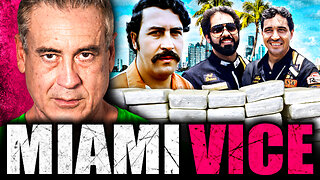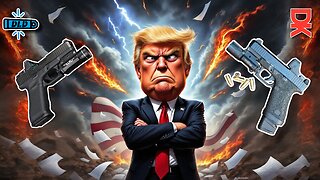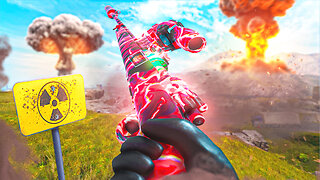Premium Only Content

"Ukraine and Russia: Unraveling the Causes of Conflict"
Ukraine and Russia are neighboring countries located in Eastern Europe. They share a complex history, cultural ties, and a long-standing geopolitical relationship. The conflict between Ukraine and Russia, often referred to as the Russo-Ukrainian War or the War in Donbass, originated in 2014. It began following a series of events that caused political instability and regional tensions in Ukraine.
In late 2013, Ukraine experienced a period of political unrest known as the Euromaidan movement. Protests erupted after the Ukrainian government, led by then-President Viktor Yanukovych, decided to abandon plans for closer integration with the European Union in favor of closer ties with Russia. The protests, fueled by public dissatisfaction with corruption and the lack of political and economic reforms, grew into a nationwide movement demanding democratic changes.
In February 2014, the situation escalated when violent clashes broke out between protesters and security forces. The protests culminated in the ousting of President Yanukovych, who fled to Russia. This event led to a power vacuum in Ukraine and further intensified the divide between those who supported closer ties with the EU and those who leaned towards Russia.
Following the change in leadership, Russia's government, under President Vladimir Putin, expressed concerns about the safety and interests of Russian-speaking populations in Ukraine, particularly in the Crimean Peninsula and the Donbass region. Russia accused the new Ukrainian government of being a threat to the rights of ethnic Russians and launched a military intervention in Crimea in February 2014. This led to the annexation of Crimea by Russia, a move that was widely condemned by the international community.
The conflict in Eastern Ukraine, specifically in the Donetsk and Luhansk regions collectively known as Donbass, began shortly after the annexation of Crimea. Pro-Russian separatist groups, supported by Russia, declared independence from Ukraine and took control of several cities in the region. The Ukrainian government responded by launching a military operation to regain control over the separatist-held territories.
The war in Eastern Ukraine has been marked by ongoing clashes between Ukrainian armed forces and pro-Russian separatists, resulting in thousands of deaths, displacement of people, and significant damage to infrastructure. Both sides have accused each other of initiating the conflict and committing human rights abuses.
The underlying causes of the war are multifaceted and involve a combination of historical, political, economic, and ethnic factors. The conflict reflects long-standing tensions between Ukrainian nationalism and Russian influence, as well as the aspirations of various groups within Ukraine to align with different geopolitical spheres.
It is important to note that the situation remains complex and evolving. Efforts to resolve the conflict, including ceasefire agreements and diplomatic negotiations, have been undertaken, but a lasting solution has not yet been achieved. The war continues to have significant humanitarian and geopolitical implications, not only for Ukraine and Russia but also for the broader international community.
-
 10:34:09
10:34:09
Rallied
12 hours ago $16.22 earnedSolo Challenges ALL DAY
244K8 -
 1:39:43
1:39:43
Brandon Gentile
2 days agoTOP Money Expert: Bitcoin Will Keep Setting All-Time Highs Beyond $10m
5.32K -
 2:02:28
2:02:28
Badlands Media
1 day agoDevolution Power Hour Ep. 385: Trump “Death” Hoax, Supreme Court Tariffs Fight, and Tech-Military Ops
59.4K26 -
 1:56:48
1:56:48
Tundra Tactical
6 hours ago $11.00 earnedFull Semi-Auto Comedy Hour
31.7K2 -
 2:07:31
2:07:31
The Connect: With Johnny Mitchell
15 hours ago $6.30 earnedSecrets Of The Cocaine Cowboys: Miami Drug Lord Reveals Truth About His BILLION-DOLLAR Coke Empire
30.3K1 -
 1:55:52
1:55:52
BlackDiamondGunsandGear
1 day agoGlocks Want Gun Control? // Trump Tramples on your Rights? // After Hours Armory
27.6K3 -
 1:55:52
1:55:52
DLDAfterDark
10 hours ago $3.21 earnedDLD Live! Trump - Flag Burning - Glock & Gun Control - Martial Law Light?? - After Hours Armory
22.7K3 -
 13:46:18
13:46:18
GritsGG
17 hours agoRumble Customs! 3515 Ws! 🫡!
94.2K -
 5:59:47
5:59:47
SpartakusLIVE
12 hours agoThe HUGEST Brain (not forehead) delivers Saturday SPARTOONS || Variety Later - Shadow of Mordor
196K4 -
 2:34:20
2:34:20
Barry Cunningham
13 hours agoPRESIDENT TRUMP WELCOMES FOOTBALL SEASON! AND MORE BREAKING NEWS!
90.3K54